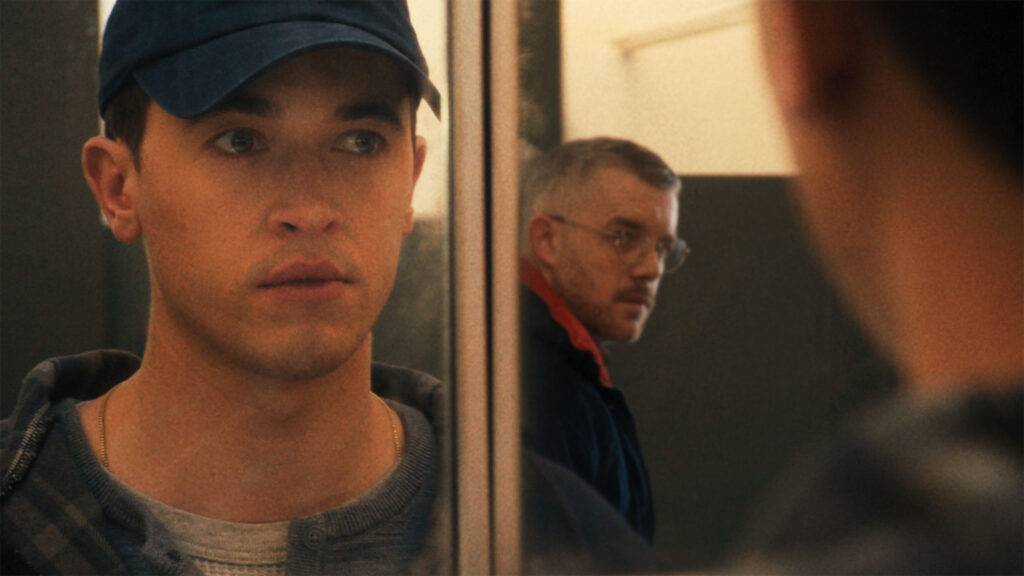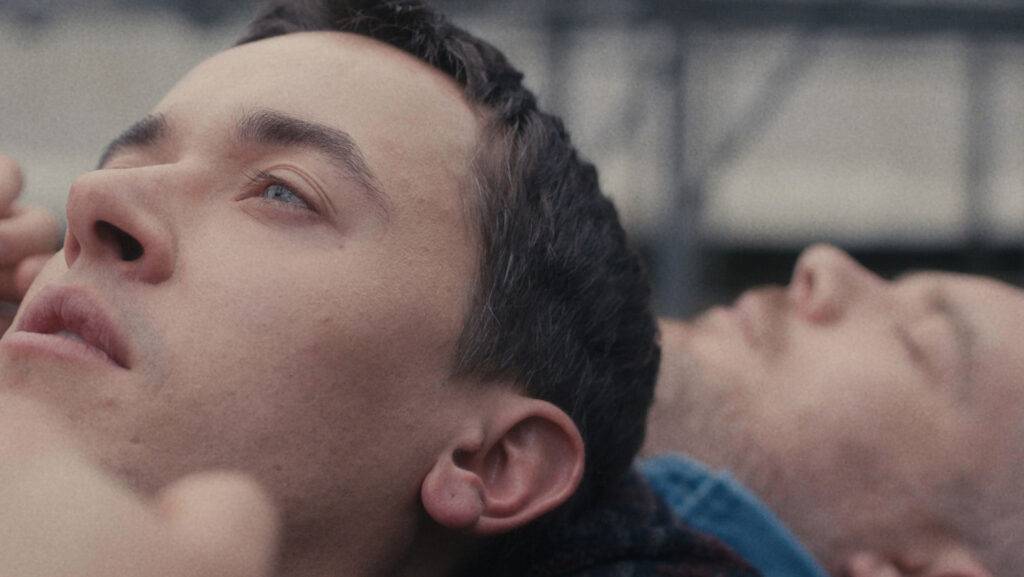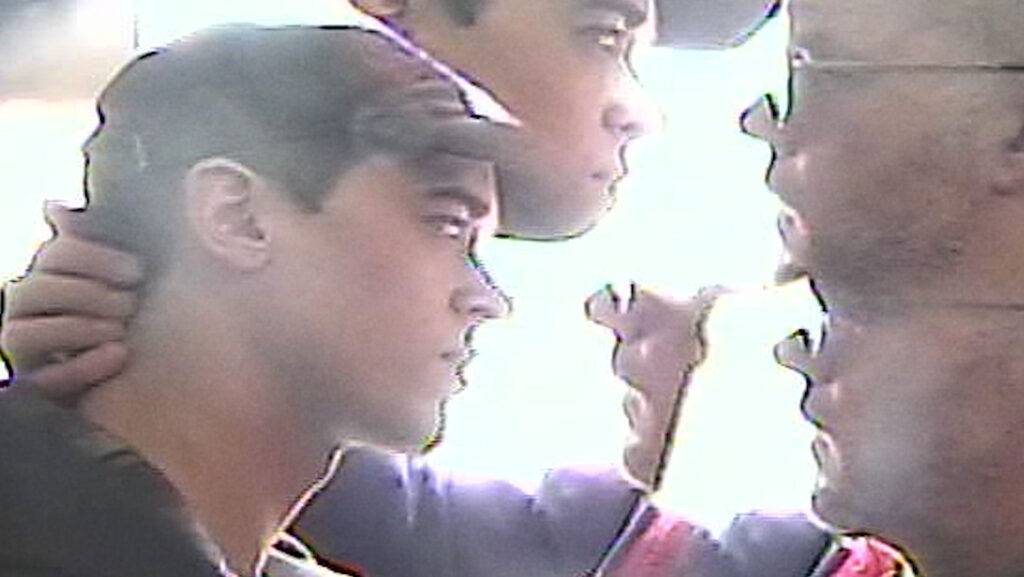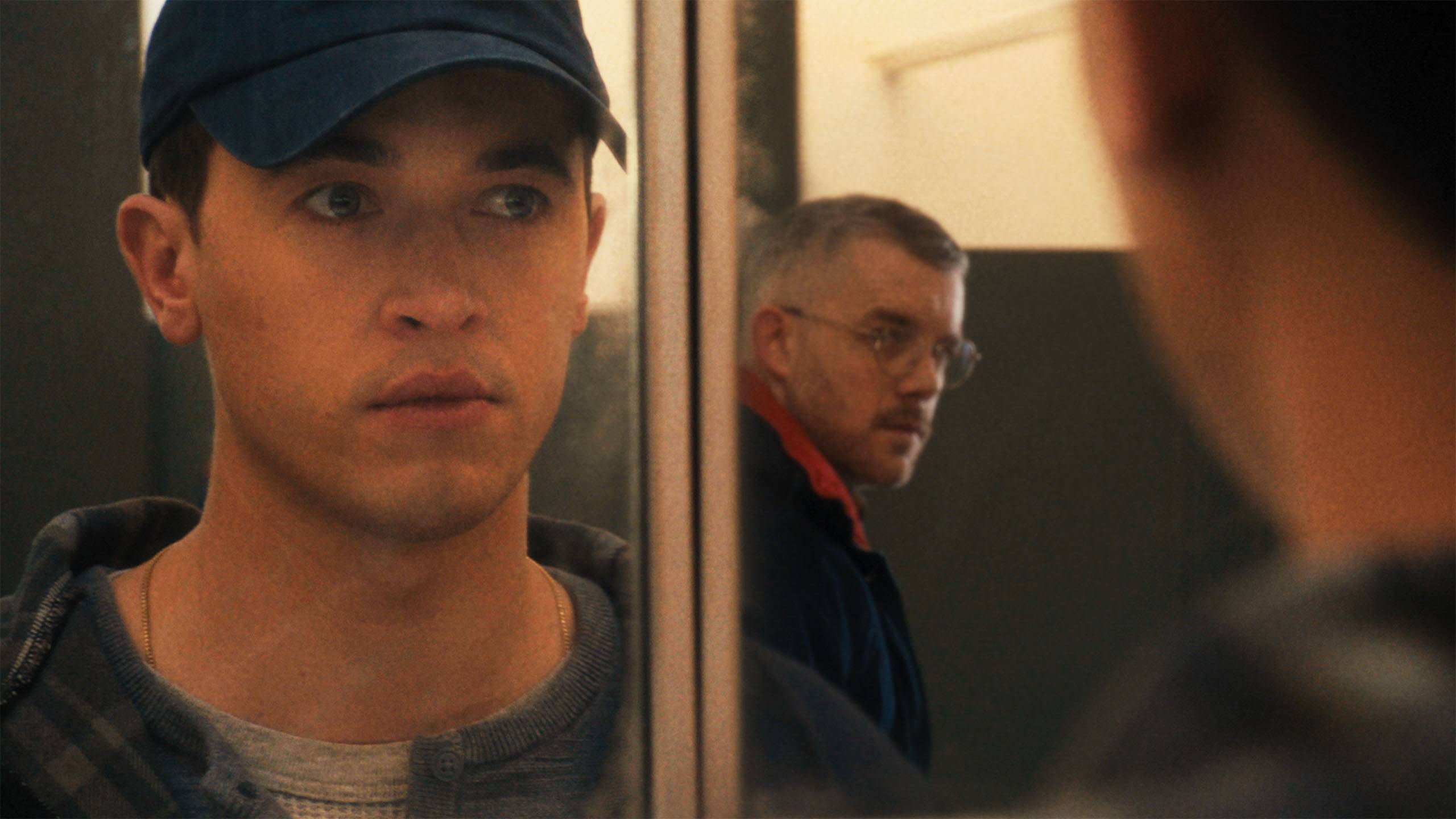Cinematographer Ethan Palmer on PLAINCLOTHES and Crafting the Aesthetic of One of the Top Films from Sundance 2025

Plainclothes came into Sundance 2025 with relatively little buzz, but quickly emerged as one of the festival’s breakout hits, thanks in large part to the gripping performances of Tom Blyth and Russell Tovey. Beyond this emotional and chemistry-laced acting, Plainclothes made a striking impression with its daring visual style – a collaboration between director Carmen Emmi and cinematographer Ethan Palmer. They made several bold decisions, including the use of claustrophobic zooms and lo-fi Hi-8 camcorder footage, to help convey the emotional turbulence of the story.
Plainclothes was awarded the Sundance US Dramatic Special Jury Award for Ensemble Cast and made it onto the Top 5 Films of the 2025 Sundance Film Festival list.
I had the opportunity to sit down with Ethan Palmer and learn more about the creative and technical choices that helped make Plainclothes one of the festival’s most talked-about titles. From joining the project late to choosing to use a wide array of cameras and lenses, Palmer shared his perspective on crafting a look that honours the film’s themes while also elevating the performances on screen. Here’s our conversation.
The Making of Plainclothes and Premiering at Sundance
Adam Manery: What was it like to be at Sundance?
Ethan Palmer: It’s a nice culmination of a lot of work and uncertainty. You go into these projects hoping that something might happen, and everyone involved has to trust their gut – on the script, on the people involved – everything.
I had very little time to do that because this came to me at the last minute. We only had something like three weeks of prep, so when I got to Sundance, I thought, “Okay, I can trust my little voice, I can trust my gut a little more.” It felt right all the way through, but to get to the premiere and have Kim Yutani give the film a tremendous blessing and acknowledgment, felt amazing.
You mentioned joining the project without a lot of pre-production time. How did this happen, and what was your relationship like with director Carmen Emmi?
It’s not totally uncommon for me to work that way. Obviously, with a feature, I would prefer to have more time, but I do commercial work and other types of work where I have to jump in right away. It’s a skill set I’ve developed – the ability to listen to a director and intuit what they’re laying down so that I can quickly “mind-meld” with them.
That’s so important in my line of work, to understand that a director is almost like a “crazy person”, and you have to treat them that way. Especially a writer-director, because they have been living inside their script for years. You have to respect that.
Because of that, when I come in late, I am completely aware that I’m walking into their world, and I want to respect that. I’m not going to start throwing myself around with ideas that are way out there. I listen first, then respond with my ideas. Luckily, with Carmen Emmi, we clicked, and we spoke the same language right away.

Film References And Musical Inspiration for Plainclothes
What were some of the visual inspirations or references for Plainclothes?
On my first call with Carmen, we immediately started talking about Black Swan and Carol – films where both of us thought, “Yes, that’s it, that’s it, that’s it.” It was a fortunate early development. Also, I live only a few hours from Syracuse, so I could drive up there and meet with Carmen in person. We started scouting the mall that we were going to shoot in, which is a big part of the police work story where Tom Blyth‘s character is essentially cruising in the mall.
Carmen was already shooting a bit with his Hi-8 camera, which we ended up incorporating into the movie. There’s this whole layer of Hi-8 video texture. It’s nice when you have an easy prosumer camera – we were immediately finding some shots, and I could look over his shoulder and see what he was looking at. The collaboration started right away visually. He had some specific visual ideas, and I’d like to think that I enhanced all of that – by knowing the gear, knowing how to light, and bringing that feature filmmaking experience to the table. It was a nice collaboration in that way.
The idea was to mix Hi-8 video, which is very lo-fi and pixelated, to create this mosaic, or prism, of textures that reflected not only Lucas’ emotional state and anxiety but also served as a nod to the ’90s and the evolving technology of the time – the rapid rise of digital in that decade.
Outside of visuals, the first thing I got from Carmen was a Spotify playlist. It was a mood reference, and it helped bring us back to the ’90s. It was a formative decade for me, but it’s even more interesting to see it with perspective now. You don’t know what a decade is until you’re looking at it 20 years later, and the playlist sets the mood for that. He and I also shared a Dropbox folder for images, where we were pulling inspirations and dropping them in there. It’s nice to go in and see how someone else frames things – what they respond to.
I keep a file of photojournalists’ stills because I’m a news junkie. I’m often reading The New York Times and if I find anything interesting, I copy it and keep it in a little folder. That informs me a lot in terms of colour and composition, but also just life itself. That’s always a goal of mine—to capture the reality of something. Even if it’s a scripted scene with actors and sets, I want to find the humanity and the real life in it, so taking visual references from outside of films can be helpful.

Shooting on a Camcorder and Using Zoom Lenses in Plainclothes
You use several different cameras and lenses in Plainclothes – from the Hi-8 camcorder you mentioned to the ARRI Alexa 35, and even the FX3, all with different prime and zoom lenses. How did you decide to incorporate this array of tools?
Philosophically, the idea was to mix Hi-8 video, which is very lo-fi and pixelated, to create a mosaic, or prism, of textures that reflected not only Lucas’ (the main character, played by Tom Blyth) emotional state and anxiety but also served as a nod to the ’90s and the evolving technology of the time – the rapid rise of digital in that decade.
Aesthetically, I felt it worked knowing we were incorporating that Hi-8 layer and I immediately started thinking about 16mm film. We never had a chance to even consider shooting on actual film, for budget and workflow reasons, but I shot the Alexa 35 in Super 16 mode and was able to use vintage 16mm zoom lenses and primes. That spoke to all the references Carmen had given me.
You prepare everything, but allow life to enter the scene and dictate what it should be. So often, the actors have their own ideas of what works. Maybe we had a shot in mind that didn’t work with their blocking, and we’d pivot with them to find what did work.
There’s also this archival police film in the movie showing an early sting operation where they had a hidden camera, and the 16mm format worked well with those other archival sources and layers. When it comes to the lenses, I always loved the way Lars von Trier used zooms. It’s like the evolution of Dogme 95, where the language comes from small video cameras, but then you translate that to cinema cameras. It’s an interesting postmodern look. It felt like it worked, so we used a lot of zooms.
We had the camera handheld, on a dolly, on a Steadicam, locked off. And we had a lot of slow, controlled zooms. To me, the zooms were enhancing the character’s journey and the world closing in around him – in a sometimes suffocating way, but sometimes in a more romantic way. There are romantic scenes with his love interest where it felt right to shoot that way – tight and very intimate.
As a Director of Photography, how do you showcase internal states and emotions of characters on screen?
It’s about getting into a scene with the actors, feeling out what they do, and then responding to that with the camera. Carmen and I made a very elaborate shot list, like a spreadsheet, that was overly ambitious for the time we had. It was more of a wish list, but still, it determined the bare minimum shots for each scene – the ones we needed to get in and out of that scene. Once you’re in it, though, the process takes over. You prepare everything, but allow life to enter the scene and dictate what it should be. So often, the actors have their own ideas of what works. Maybe we had a shot in mind that didn’t work with their blocking, and we’d pivot with them to find what did work.
Carmen has a specific eye and specific shots he wanted, which was an ongoing dialogue on set. There were a lot of things that we just intuitively knew were right. I operated the camera for the whole film, and there were times when not much needed to be said. We had talked a lot in prep, so we would go into a scene, let the actors do their prep, do a take, and then Carmen and I would look at each other and say, “That was it.” Whatever happened in that moment was the right thing.
Something I’ve learned is that if you don’t pay attention to your actors, your cinematography will suffer.
Quick Questions with DP Ethan Palmer
If you could work with any director, who would it be?
I’m terrible at picking favourite movies and directors, but I’ll say Darren Aronofsky because I respect so much of what he’s done.
What is a film that inspires or awes you, from a cinematography perspective?
Since I’ve been in this film’s mentality while doing these interviews, I’ll also say Carol. It’s so well-shot and inspiring. It’s subtle. I love cinematography that feels simple but has a complex structure, like Roger Deakins or Robert Elswit. Carol is one of those films – it’s stylized, but there’s so much subtlety in it.
Were you able to catch any films while at Sundance?
Unfortunately, I didn’t get to see anything at the festival, which is often how it goes. If I Had Legs, I’d Kick You was the one I was really hoping to see!
Read More:





Pingback: Top 5 Movies from the 2025 Sundance Film Festival